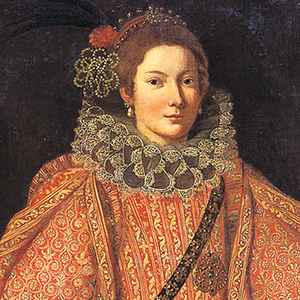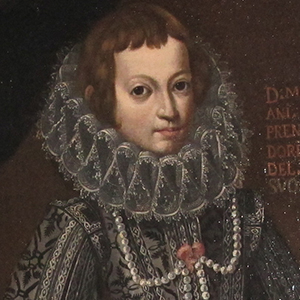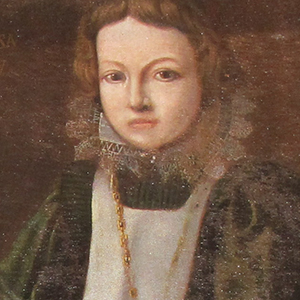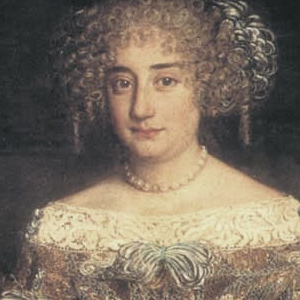The room was originally one of the bedrooms of Peretta Usodimare Del Carretto, who Andrea Doria married in old age in 1527. In the centre of the ceiling there is a black keystone bearing the Doria crest, which is an eagle against a gold and silver background. This is joined to the Cibo crest (three lines of a chess board), chosen by his spouse in memory of her familial ties to Pope Innocenzo VIII (Giovanni Battista Cibo), under whose service Andrea started his brilliant military career. The pontiff was the grandfather of the future bride of the admiral. In the fanlight of this room the tale of Arachne, an excellent weaver, who dared to challenge Minerva, is represented. Defeated by the goddess, she was transformed into a spider and condemned to weave her web for eternity. On the northern wall the early scenes of this story can be made out: the first meeting between Minerva and Arachne, their weaving contest, and finally the work that Arachne produced depicting the “love of the gods”. The subsequent scenes are based around the “love of Jupiter” and expanded on on the east and south walls. The work draws to a close on the west wall, with the final moments of the story, in which Minerva shows Arachne her own work and then punishes her.
In this room there are two small tables decorated in inlaid ebony and ivory. These two pieces, of notable quality, were created in the sixteenth century, most probably in southern Italy, and perhaps in or around Naples. The other piece of furniture present in the room, made up of two parts - a wooden cabinet set on a chest of drawers - presents scenes taken from Genesis and from ancient Roman history, elegantly carved in the bands of ivory. The room is home to portraits of noblewomen of the sixteenth century, who due to a series of untimely deaths of male members of the family, were to continue the family’s lineage. Leading players in the marriage negotiations that were to bring about the union of the Dorias with two particularly influential families, the Landis and the Pamphiljs, were Zenobia II, eldest sibling of Andrea II, and Violante Lomellini, the wife of Andrea III Doria Landi. Through these marriages this Genoese bloodline became one of the richest dynasties in Europe.

The portrait of the red lady, painted at the start of the sixteenth century and thought to have been done by the Genoese artist Bernardo Castello, is a noteworthy work, created in a similar style to the canon of the well-known portrait artist Van Dyck. The model is wearing a gilded red outfit, in line with the norms of the Spanish style of the time. Through dating the painting, it is believed that the model may be Zenobia II, who, waiting for her brother to come of age following the death of her parents, took on the responsibility of guiding the destiny of the Doria di Melfi clan between 1620 and 1627. This period saw heavy financial investment in games, parties, music, diningware and furniture in order to keep up the family’s lifestyle and the furnishings of the Villa with the levels of luxury and splendour of the age.

The inscription at the top-right identifies this as being Maria Polissena Landi, sole successor of Federico, Prince of Valditaro, from his marriages to Lady Bardi and Lady Compiano. In 1627 Maria Polissena Landi married Giovanni Andrea II Doria. The premature death of her husband led to her being ruler on behalf of their son, Andrea III, who would go on to marry Violante Lomellini, a descendant of Duke Giacomo. These two women never had a good relationship, so much so that Polissena was excluded from family business and was made by her son to withdraw to the Gremiasco estate. The painting, finished one year before her marriage, was kept as her official portrait in Melfi castle, which has been part of the Doria estate since the era of Andrea I. The desire to demonstrate the status of the noblewoman, shown by her pearl necklace and opulent clothing, is in contrast to the less than desirable quality of the work.

During the renovations of the museum, this painting turned out to already have been repainted so that it is almost impossible to judge its artistic merits and how well it has actually been conserved. The inscription identifies the child as being Ottavia Caterina Trivulzio at five years of age. She is most probably the child of Nicolò Trivulzio and Gerolama Doria, who were joined in marriage in 1574. The noble and ancient family of the Trivulzios was an important lineage of Lombardy that reached its summit during the fifteenth century.

Anna Pamphilj, daughter of Olimpia Aldobrandini Borghese and Camillo di Valmontone, and a relative of Pope Innocenzo X, married Giovanni Andrea III Doria Landi on the 25th October, 1671. The wedding took place in Rome, and was celebrated in Genova with exceptional pomp and was an opportunity to radically modernize the decor of the building. As was the custom of the time, the couple-to-be did not know each other and so, before the wedding, the Pamphilj family sent this portrait to her future husband. The painting, by Jacob Ferdinand Voet, an excellent portrait artist of the late Baroque period, shows the young lady in a very realistic way without hiding her physical defects. Anna Pamphilj is wearing an elegant French-style outfit and is holding a lily in her hand, a symbol of purity.
In the two cabinets beneath the portraits of Caterina Trivulzio and Maria Polissena Landi, there are six plates from the seventeenth century, produced by the famous manufacturers, Montelupo in Tuscany, and di Viterbo. To the right, there are three pieces of pottery showing infantrymen and standard bearers, called “Arlecchini di Montelupo” (Montelupo harlequins) for their bright colours and striking poses. Meanhwile, to the left there is a collection of dishes bearing more traditional religious figures, for example, Saint Rocco, a bishop and symbols of the Passion of the Christ.